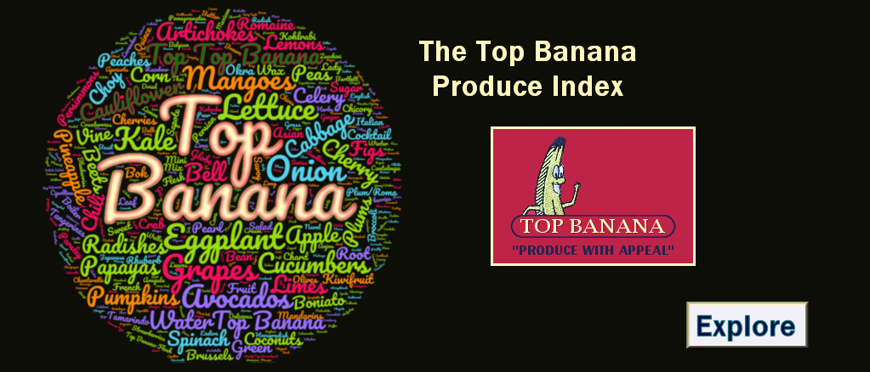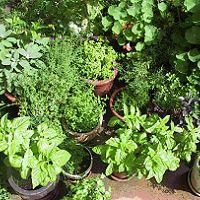Not only is herb gardening easy, it can be very satisfying, especially if you like delicious, fresh tasting food.
Many herbs do especially well in containers, and a nice thing about containers is that they can be set up close to the food prep area for quick and easy picking. Done in this way, your container herb garden becomes a beautiful extension of your kitchen.
In the above photo of an herb garden in the old southwest section of Reno, there are two types of parsley (Italian and curly), regular thyme, lemon thyme, lettuce leaf basil, Genovese basil, burgundy basil, sage, chives, cilantro, summer savory, marjoram, tarragon, rosemary, regular italian oregano, pepper oregano, peppermint, and nasturtium. Just out of the picture are dill and fennel.
Another advantage to growing your own herbs is that come fall, you can harvest your plants for drying. Forlong-stemmed herbs, such as basil, dill, marjoram, parsley, sage, summer savory, mint, and rosemary, bunch each type together, tie at the top, then hang them in a moisture-free, warm place for drying. Once they are dry, crush them, then store them in containers. You'll have herbs for cooking through to spring.
Essential Gastronomic Herbs
- Basil
- Cilantro
- Chives
- Dill
- Oregano
- Marjoram
|
|
- Mint
- Parsley
- Sage
- Tarragon
- Rosemary
- Thyme
|
Origins of Power and Wisdom
The art of growing herbs and spices reaches back thousands of years in virtually all cultures, north, east, south and west. In fact, interest in the healing power of plants forms the origin of the science of medicine -- from Hippocrates, the ancient Greek physician considered to be the founder of Western medicine, to the herbalist Shen Nung, one of the founders of Chinese medicine, to the Ayurveda or 'Science of Life’ of ancient India, to the many highly venerated Shamanist traditions of the Americas. Throughout these traditions, people studied with Hermetic sincerity the mysterious power of plants, even crediting intellect, acumen, wisdom -- even religious and political power -- to the understanding and mastery of their habits, their uses and their effects.
Early North American immigrants brought many different types of herbs with them from England and Europe. It was mainly the tradition of women as nursemaids and medics that kept charge of the craft while passing their knowledge forward. To this day, many people continue the tradition of cultivating medicinal plants for home use, like the aloe plant for soothing minor cuts and burns.
If you would like to know more about the history and lore of medicinal plant keeping, we suggest A Modern Herbal  (in two volumes) by Margaret Grieve. The research for this illustrated text was done in the early 1900s and offers the interested reader both botanical and medical information (both of which were within a single tradition until the 17th century), economic uses, recipes and cultivation tips on over 800 herbs and plants. The work includes information on over 40 poisonous plants and Volume II has an extensive index which is very useful for cross referencing. The medical claims are somewhat dated, of course, but the histories, recipies and remedies are very interesting,and the cultivation information is more or less accurate for climates of the Pacific Northwest.
(in two volumes) by Margaret Grieve. The research for this illustrated text was done in the early 1900s and offers the interested reader both botanical and medical information (both of which were within a single tradition until the 17th century), economic uses, recipes and cultivation tips on over 800 herbs and plants. The work includes information on over 40 poisonous plants and Volume II has an extensive index which is very useful for cross referencing. The medical claims are somewhat dated, of course, but the histories, recipies and remedies are very interesting,and the cultivation information is more or less accurate for climates of the Pacific Northwest.
About Growing Herbs Throughout The Year
You can grow quite a few differenty types of herbs in a small garden space during the summer months. And, if you grow your herbs in containers and have a sunny spot inside, some of the essential varieties can be brought indoors in winter.


